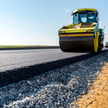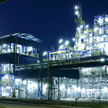As Łukasz Sosnowski, the main specialist in the department of green economy of the ministry, explains, consultations lasting several months resulted from the necessity to carry out a multithreaded analysis of the doubts and conclusions raised. “The latest version will be published in the coming weeks. It is planned that it will be adopted by the Council of Ministers as soon as possible,” adds Sosnowski.
According to engineer Tomasz Szczygielski, PhD from the Institute of Applied Research of the Warsaw University of Technology, the January version of the document aptly outlines the areas and diagnoses the problems that need to be addressed. However, we lack the necessary instruments. “One cannot see how to achieve a symbiosis in the economy between entities producing products from waste, e.g. from the power industry, and those who are to use them, e.g. in infrastructure construction. There are no regulations enabling the prevention of waste generation by recycling it to products at the earliest possible stage,” Szczygielski enumerates.
It turns out that not all business guidelines were included in the document. In the case of JSW – as explained by Ewa Wojakowska, the main specialist of the environmental protection team in the company – on the one hand, the postulate to create a catalogue of anthropogenic raw materials and a list of companies which have a demand for them was partially taken into account, the use of aggregates, e.g. in the construction industry, was indicated, as well as actions were proposed regarding legislative changes in this area. There was no analysis of the post-mining areas in the context of restoring their original value after revitalization and recultivation.
Irena Pichola, partner from Deloitte Advisory and leader of the sustainable development team, would like to see concrete projects in the roadmap, the effects of which can then be measured. She sets Finland as an example, which wants to be the leader in the implementation of circular economy. “There, the roadmap was created four years ago and the consultation process revolved around the planning of specific actions. The same path was followed by Bulgaria, focusing on the analysis of projects,” says Pichola. Deloitte will prepare a report on circular economy in Poland for the climate summit in Katowice (COP24). It will indicate the areas on which the state and entities operating on the Vistula should focus.
It may take years to implement tasks from different areas signalled in the roadmap. Therefore, there is a fear that, as a country with large infrastructural projects underway, we will not take advantage of the benefits of circular economy “The regulations are necessary for us to introduce circular economy instead of remaining on the stage of waste recycling,” emphasizes Szczygielski.
Tools and cooperation
The key to success is the cooperation between business representatives, public administration and consumers. “Creation of infrastructure supporting waste segregation and recycling, as well as places where rarely used products are exchanged or shared must begin to function in our consciousness not only as an idea, but also as a daily practice. Manufacturers, in turn, should think about every stage of a product’s life cycle and start designing it with this in mind,” advises Anna Sapota, vice-president of CP Recycling Packaging Recovery Organization. The industry is doing well. In 2015, 58% of packaging waste and 82% of cans were recycled. This is due to the value of aluminium, for which you receive a small remuneration (about 5 groszy per can).





















